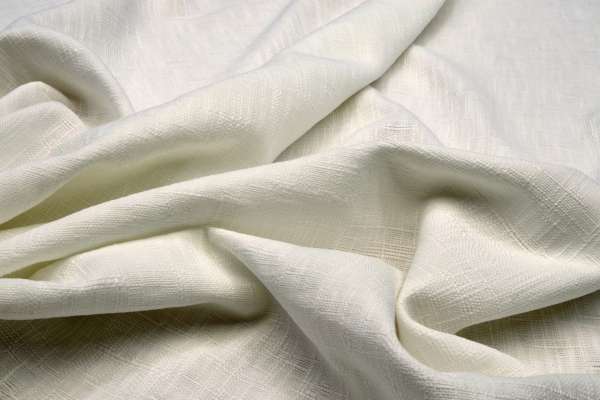Proper care for cotton bed sheets is essential for extending their lifespan and ensuring they remain comfortable and hygienic. Cotton, known for its durability and breathability, requires specific washing practices to maintain these qualities. The right washing settings play a crucial role in this regard. Using appropriate water temperature, cycle type, and spin speed not only cleans the sheets effectively but also prevents damage to the fibers. This helps retain the softness and structural integrity of the cotton, ensuring the sheets continue to provide a comfortable sleeping experience. Understanding and implementing these washing practices can significantly enhance the durability and comfort of your cotton bed sheets, making them a lasting and cozy part of your bedding ensemble.
Understanding Cotton Fabric

Cotton fabric, celebrated for its breathability and softness, is a popular choice for bed sheets. It’s characterized by its ability to wick moisture, providing a comfortable sleeping experience. There are several types of cottons, each with unique qualities. Egyptian cotton, known for its long fibers, offers exceptional softness and durability, often found in luxury bedding.
Pima cotton, similar to Egyptian, is highly sought-after for its silky smooth texture and sheen. Regular cottons, while not as soft as Egyptian or Pima, are still durable and offer great comfort at a more affordable price point. Understanding these variations helps in choosing the right cotton sheets to match personal comfort preferences and budget considerations, ensuring a restful and pleasant sleep experience.
Preparation for Washing

Before washing cotton sheets, it’s essential to check the care label for manufacturer-specific recommendations. This ensures that the sheet are washed according to their unique requirements, preserving their quality and longevity. Additionally, sorting sheets based on color and fabric type is crucial. Separating light colors from darks prevents color bleeding while washing similar fabric types together ensures that each batch is washed under conditions best suited for that particular material. This preparatory step is key to maintaining the integrity and appearance of your cotton sheets.
Choosing the Right Detergent

For cotton sheets, selecting the right detergent is crucial for effective cleaning while preserving fabric quality. Mild or cottons-specific detergents are recommended, as they are gentle yet effective on cottons fibers, maintaining the fabric’s softness and durability. Liquid detergents are generally preferred for cotton sheet as they dissolve easily in water, ensuring a thorough cleaning without residue. They are particularly effective in cold water, ideal for preserving color and fabric strength. Powder detergents, while effective for heavily soiled sheets, might leave residues if not rinsed properly. Hence, the choice between liquid and powder should align with the specific washing needs of your cotton sheets.
Water Temperature Settings
The water temperature setting is pivotal for washing cotton sheets. Hot water, ideal for deep cleaning and sanitizing, can shrink and fade cottons, making it suitable for white or very dirty sheet. Warm water offers a balanced approach, effectively cleaning with less risk of shrinkage, ideal for colored cottons. Cold water, the gentlest option, preserves color and minimizes shrinkage, best for delicate or lightly soiled cotton fabrics. It’s crucial to consider the specific type of cotton; for instance, luxury cottons like Egyptian or Pima may require cooler temperatures to maintain their softness and sheen. Selecting the right water temperature ensures effective cleaning while preserving the integrity of your cotton sheets.
Washing Machine Settings

For cotton sheets, using the appropriate wash cycle and machine loading is essential. A gentle or normal cycle is typically recommended, striking a balance between thorough cleaning and fabric care. Gentle cycles are ideal for high-quality cottons like Egyptian or Pima, while normal cycles suit regular cottons well. It’s also important to balance the load in the washing machine. Overloading can lead to uneven washing and excessive wear on the sheets, while underloading may waste water and energy. Ensuring a balanced load allows for effective cleaning and rinsing, contributing to the longevity and freshness of your cotton bed sheet.
Rinsing and Spin Cycles
Thorough rinsing is crucial in the washing process of cotton sheets to ensure all detergent residues are removed, preventing skin irritation and maintaining fabric softness. The appropriate spin speed is equally important; a moderate spin speed effectively removes excess water, reducing drying time and minimizing wrinkles. However, it’s essential not to use too high a speed as it can stress and stretch the cottons fibers, potentially leading to damage. Balancing these aspects during the rinse and spin cycles is key to achieving clean, comfortable, and long-lasting cottons bed sheets.
Post-Wash Care
After washing cotton sheets, the choice between line drying and tumble drying can significantly affect their longevity and texture. Line drying is gentle, preventing shrinkage and fabric wear, but may result in stiffer sheet. Tumble drying, on the other hand, offers softness and reduced wrinkling but can cause shrinkage and faster wear. If using a dryer, a low heat setting is advisable. Proper folding and storage are also crucial; fold sheets neatly to prevent deep creases and store in a cool, dry place to maintain fabric integrity. Avoiding over-stuffing storage spaces helps in keeping sheet smooth and ready for use.
Troubleshooting Common Issues
Cotton sheets may face issues like shrinkage, color fading, and fabric pilling. To combat shrinkage, wash and dry at lower temperatures. Prevent color fading by using cold water and avoiding direct sunlight when drying. For pilling, choose a gentle wash cycle and avoid mixing with rough fabrics. Addressing tough stains requires prompt treatment; pre-treat with a stain remover or a mixture of baking soda and water before washing. For persistent stains, repeated gentle washing might be necessary, avoiding harsh chemicals that can damage the cottons fibers. These tips help maintain the quality and appearance of your cotton sheet.
Is it okay to wash cotton sheets with other fabrics?
Cotton sheets can generally be washed with other similar fabrics, such as linen or polyester. However, it’s advisable to separate dark colors from light ones to prevent color bleeding. Additionally, avoid washing cotton sheets with fabrics that produce a lot of lint to prevent lint transfer.
Can I use fabric softener when washing cotton sheets?
Fabric softeners can help keep cotton sheets soft and reduce static cling. However, some people prefer to skip fabric softener as it may leave a residue or decrease the absorbency of the fabric. If you choose to use fabric softener, follow the manufacturer’s instructions and consider using it sparingly.
Conclusion
The proper care of cotton sheets is fundamental for their longevity and comfort. Key points include adhering to specific wash settings like water temperature, cycle type, and appropriate detergent choice. Pre-treating stains, avoiding overloading the washing machine, and balancing spin cycles ensure thorough cleaning without damaging the fabric. Post-wash care, whether line drying or using a tumble dryer on a low setting, along with proper folding and storage, plays a crucial role in maintaining the sheets’ integrity. Regular care, combined with adherence to these recommended settings and practices, will keep cotton sheet comfortable, durable, and fresh, enhancing the overall quality of your bedding for years to come.
